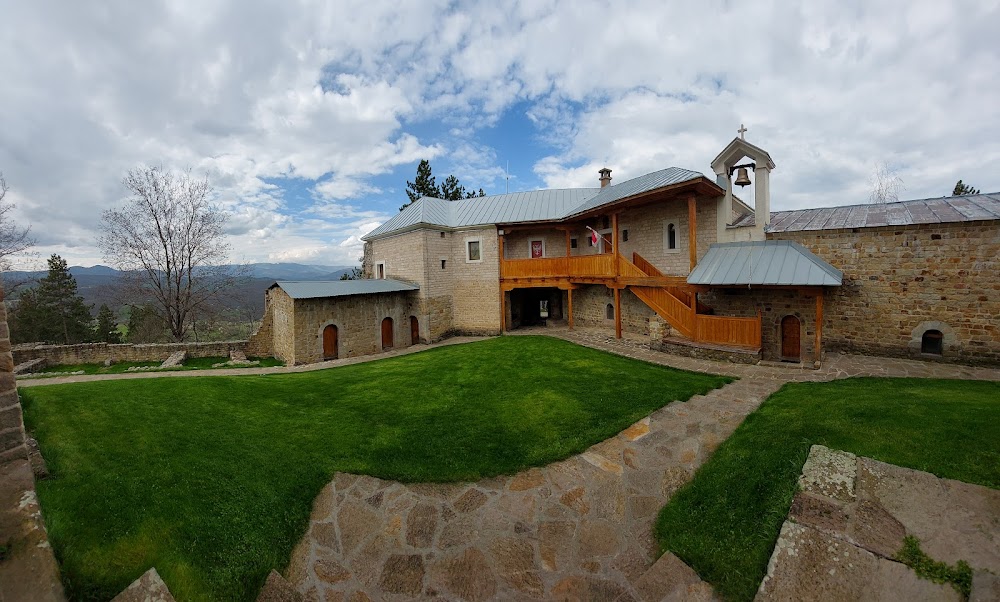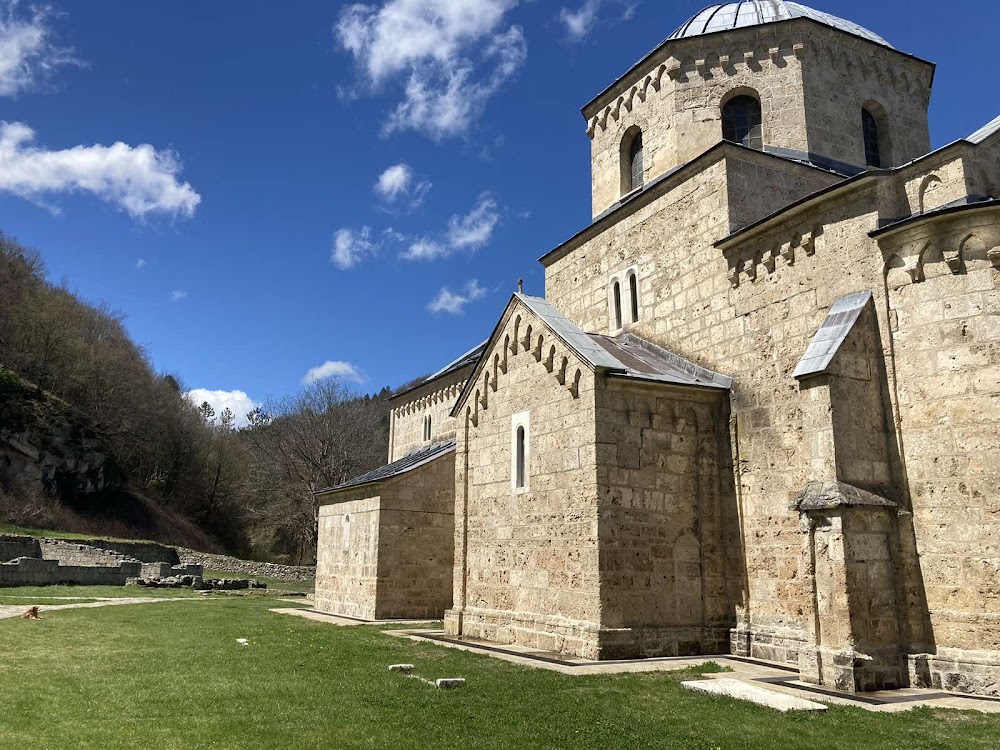Djurdjevi Stupovi Monastery (Манастир Ђурђеви Ступови)
Overview
Đurđevi stupovi: A Historical Gem in Serbia
Đurđevi stupovi, also known as the Monastery of Saint George, is a captivating historical landmark located in the Raška District of Serbia. Established in the late 12th century, this monastery exemplifies medieval Serbian architecture and reflects the deep spiritual commitment of its founders.
The origins of Đurđevi stupovi can be traced back to Stefan Nemanja, the Grand Prince of Serbia and a key figure in the Nemanjić dynasty. Shortly after ascending to power, he vowed to construct a church dedicated to Saint George if he were to escape imprisonment by the Byzantine Empire. True to his promise, upon regaining his freedom around 1170, he initiated the ambitious construction of this remarkable monastery.
Architectural Significance
The construction of Đurđevi stupovi was no small feat, involving the finest artisans and builders of the period. Its design showcases the influence of Byzantine architectural principles, particularly evident in the cross-in-square plan and distinctive exterior. The walls were crafted from limestone and tuff, merging robust materials to create a visually appealing finish, while red bricks provided vibrant accents to the façade.
Stepping inside, visitors are greeted by an interior adorned with frescoes that depict biblical scenes and saints in stunning detail. These frescoes, characteristic of the era's highly stylized artistry, communicate spiritual and moral themes in a narrative format. Although much of the artwork has faded over the centuries, the surviving remnants still offer a glimpse into the rich tradition of medieval sacral artistry.
The monastery's structure features a prominent central dome flanked by two bell towers, giving rise to the name “stupovi,” which translates to “pillars” or “towers.” The central dome symbolizes heaven, while the towers contribute majesty and a monumental quality to the overall design. This architectural choice not only fulfills a spiritual representation but also creates a striking silhouette against the landscape.
A Cultural and Religious Center
Shortly after its completion, Đurđevi stupovi emerged as a vital cultural and religious hub, serving as one of the principal centers of medieval Serbian statehood and spirituality. Monks residing within its walls played a crucial role in religious scholarship and manuscript conservation, reinforcing the monastery’s significance in preserving Serbian heritage.
Despite its initial success, Đurđevi stupovi faced numerous challenges in the centuries that followed. The Ottoman occupation of Serbia brought considerable damage to the monastery, forcing the monks to abandon their residence and leaving the once-thriving religious center in ruins. Nature and the elements further exacerbated the deterioration of the abandoned structure.
A Revival in the 20th Century
Interest in Đurđevi stupovi was rekindled in the 20th century, prompting the Serbian government and various cultural preservation organizations to launch restoration projects aimed at saving this historical treasure. Through meticulous reconstruction and conservation efforts, restorers sought to revive both the physical structure and its spiritual essence.
Today, Đurđevi stupovi stands as a revitalized symbol of cultural heritage and religious devotion. It attracts numerous visitors, pilgrims, and scholars each year, all eager to admire its historical beauty and spiritual significance. Ongoing restoration and preservation efforts ensure that this medieval marvel continues to be a vibrant part of Serbia’s historical narrative for future generations.
Symbol of Resilience
Not only does Đurđevi stupovi provide a tangible connection to Serbia’s medieval past, but it also embodies resilience and the enduring strength of cultural identity. The story of its creation, challenges, and resurgence encapsulates a broader narrative of national history, etched in both stone and spirit. Visitors to this remarkable site will not only appreciate its architectural beauty but will also feel a profound connection to the rich tapestry of Serbian heritage.






